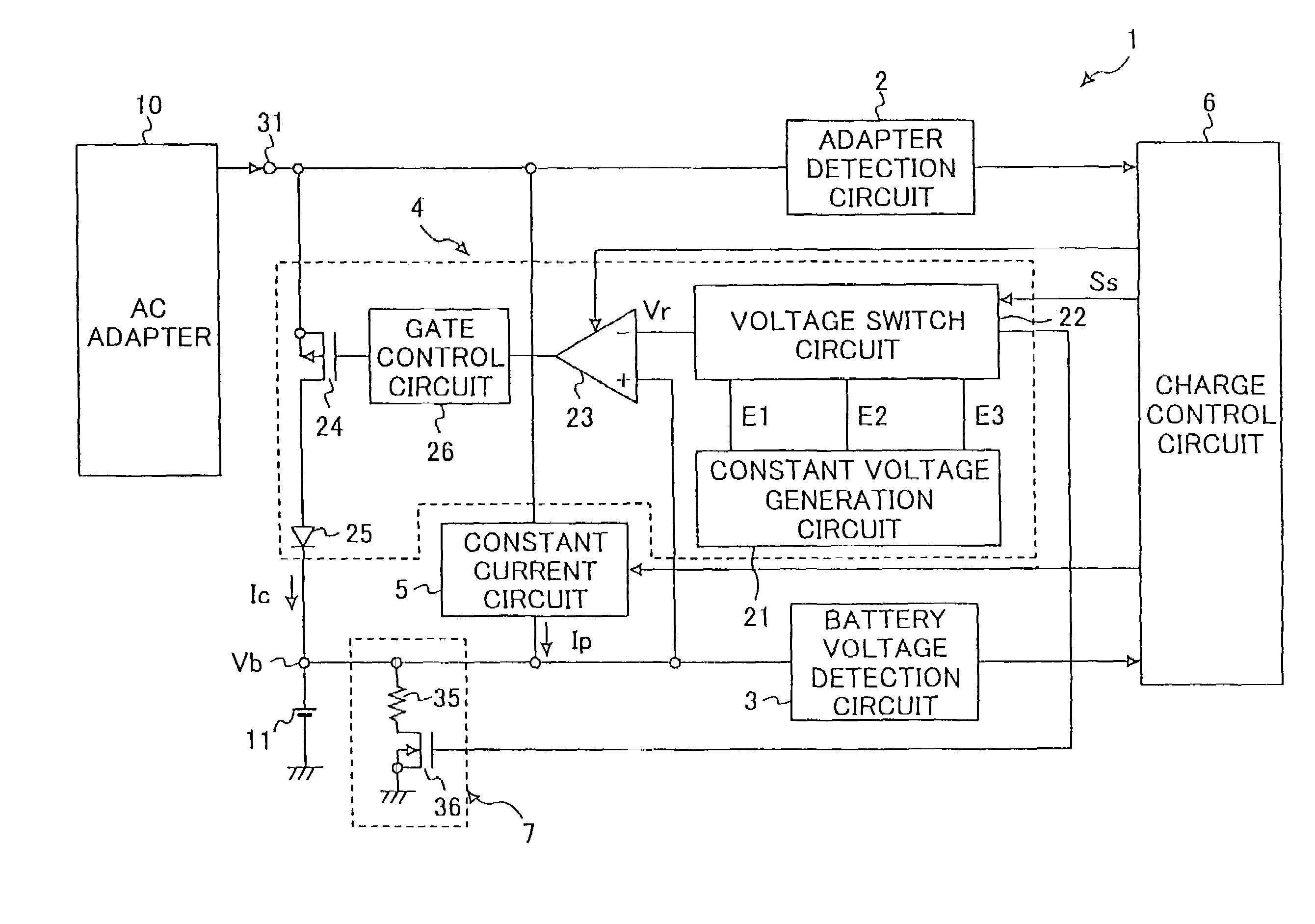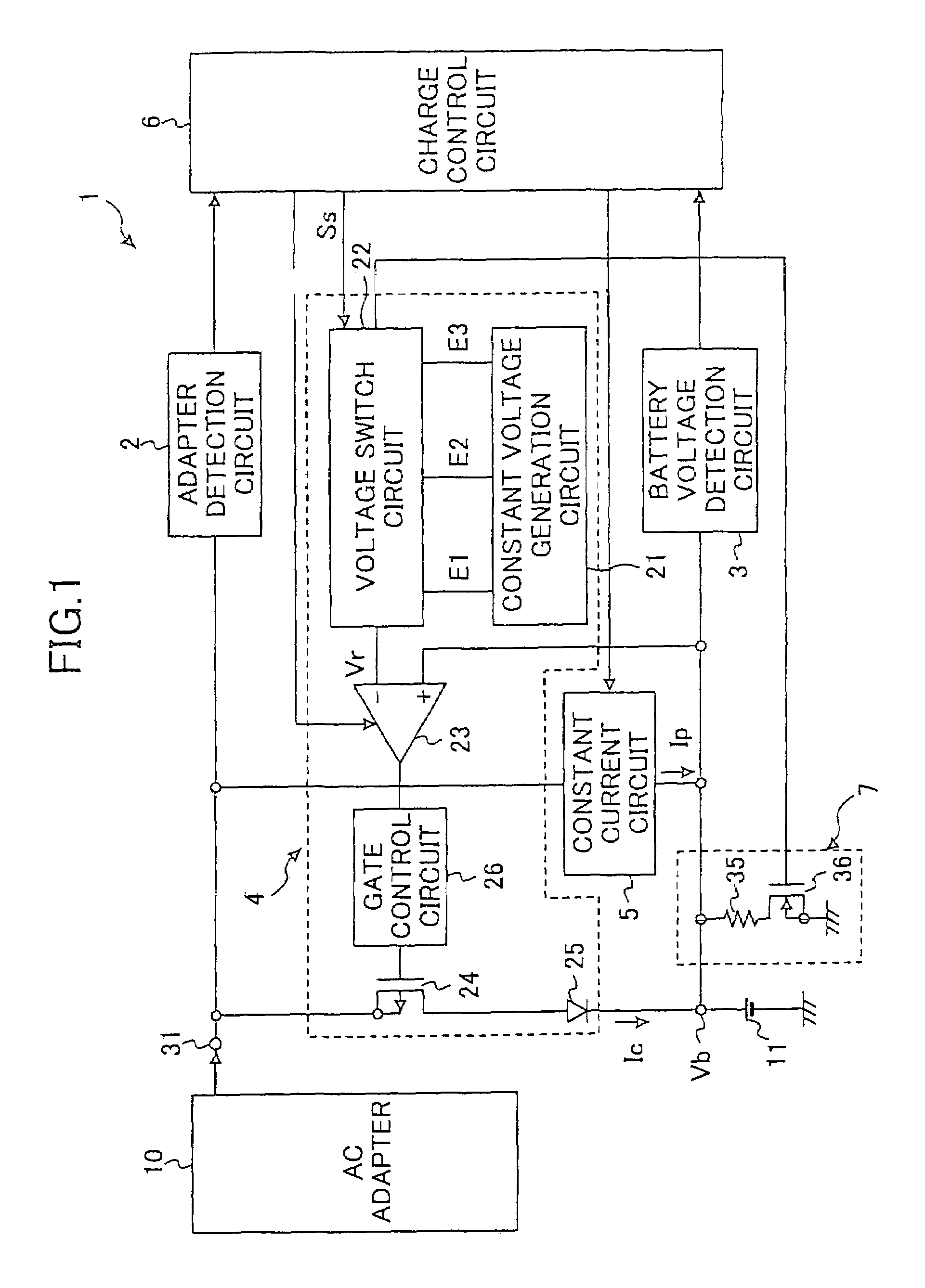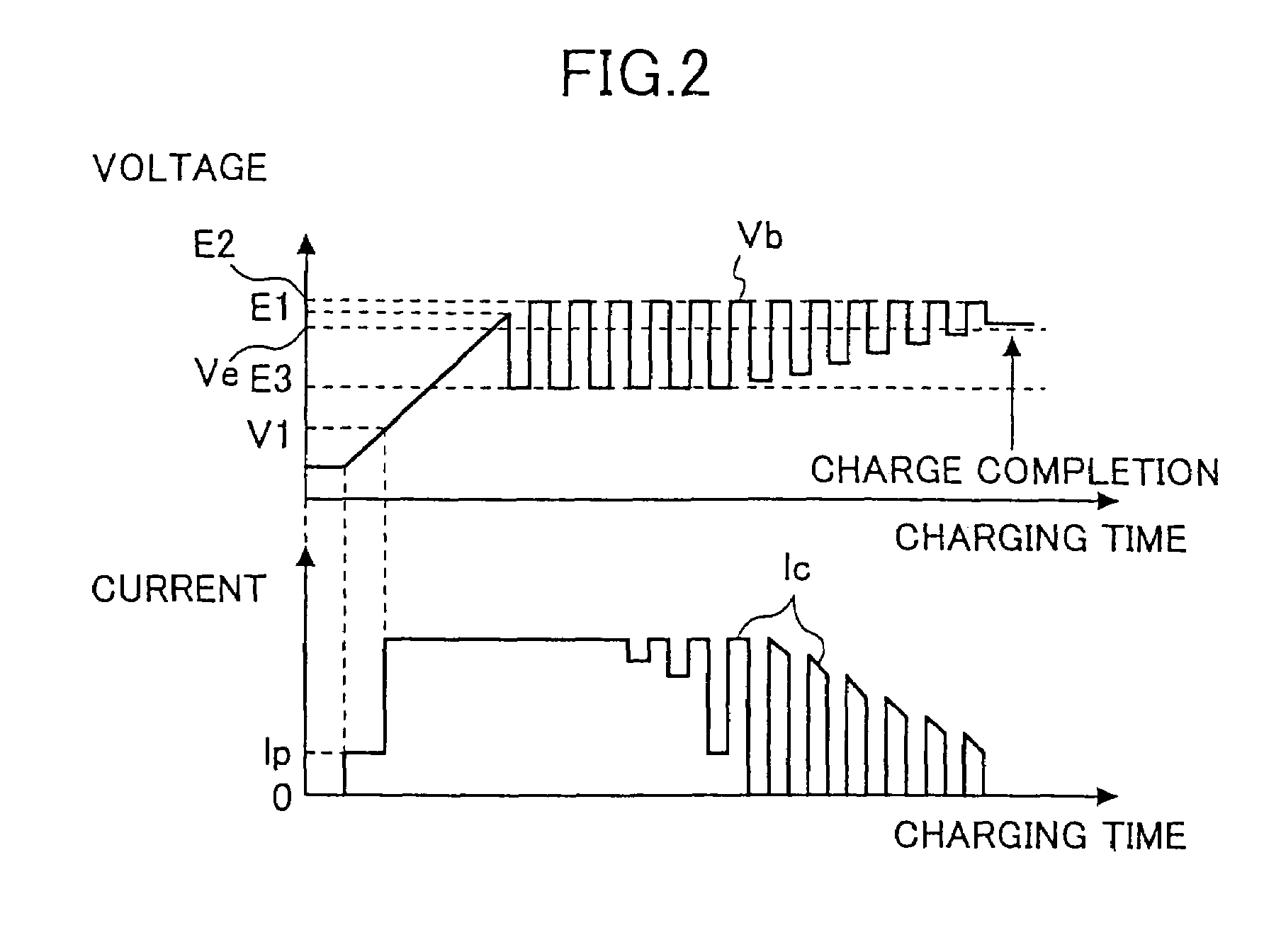Charging circuit for secondary battery
a charging circuit and secondary battery technology, applied in electric power, electric vehicles, transportation and packaging, etc., can solve the problems of shortening the charging time compared with the constant-current/constant-voltage method, affecting the quality of secondary batteries, and affecting the performance of secondary batteries, so as to reduce manufacturing costs and high accuracy
- Summary
- Abstract
- Description
- Claims
- Application Information
AI Technical Summary
Benefits of technology
Problems solved by technology
Method used
Image
Examples
first embodiment
[0051]Next, a detailed description will be given of the present invention, with reference to the drawings.
[0052]FIG. 1 is a diagram showing an example of the structure of a charging circuit for a secondary battery in a first embodiment of the present invention. It should be noted that FIG. 1 shows the example of the charging circuit for a lithium ion battery used for a mobile phone.
[0053]In FIG. 1, a charging circuit 1 for a secondary battery includes an adapter detection circuit 2 that outputs a predetermined signal when a power supply voltage from an AC adapter 10 that is a direct-current power source is equal to or higher than a predetermined value, a battery voltage detection circuit 3 that detects and outputs a positive voltage (hereinafter referred to as a “battery voltage”) Vb of a lithium ion battery 11 that is a secondary battery, and a constant-voltage circuit 4 that charges the lithium ion battery 11 at a constant-voltage.
[0054]Further, the charging circuit 1 includes a c...
second embodiment
[0080]In the following, a description will be given of the present invention, with reference to the drawings.
[0081]FIG. 5 is a diagram showing a charging circuit according to the second embodiment of the present invention. In FIG. 5, the charging circuit includes an AC adapter B10 that supplies a charging current, an adapter detection circuit 12 detecting that the AC adapter B10 is connected, a battery voltage detection circuit 16 that detects the voltage of a secondary battery 14, a constant-voltage circuit 18 that performs a constant-voltage charge on the secondary battery 14, a constant-current circuit 20 that supplies a constant-current to the secondary battery 14, a gate voltage detection circuit B22 that detects the voltage of a control terminal of a control transistor M1, a diode D1 that blocks a current flowing from the secondary battery 14 to the AC adapter B10, and a charge control circuit B24 that performs drive control of the constant-voltage circuit 18 and the constant-...
third embodiment
[0100]Further, in the charging circuit by using the constant-voltage generation circuit 42 that generates the reference voltage BE2, the gate voltage detection circuit B22 sets the voltage dropped from the voltage of the AC adapter B10 by the reference voltage BE2 equal to the gate voltage at which the PMOS transistor M1 is cut off. However, this is the same thing as to set the charge complete voltage equal to the gate voltage at which the pMOS transistor M1 is cut off, by using the constant-voltage generation circuit that generates the charge complete voltage. In addition, by using the constant-voltage generation circuit 46 that generates the reference voltage BE4, the charge current control circuit 50 sets the voltage dropped from the voltage of the AC adapter B10 by the reference voltage BE4 equal to the gate voltage of the pMOS transistor M1 that outputs the predetermined constant current. However, this is the same thing as to set, by using the constant-voltage generation circu...
PUM
 Login to View More
Login to View More Abstract
Description
Claims
Application Information
 Login to View More
Login to View More - R&D
- Intellectual Property
- Life Sciences
- Materials
- Tech Scout
- Unparalleled Data Quality
- Higher Quality Content
- 60% Fewer Hallucinations
Browse by: Latest US Patents, China's latest patents, Technical Efficacy Thesaurus, Application Domain, Technology Topic, Popular Technical Reports.
© 2025 PatSnap. All rights reserved.Legal|Privacy policy|Modern Slavery Act Transparency Statement|Sitemap|About US| Contact US: help@patsnap.com



